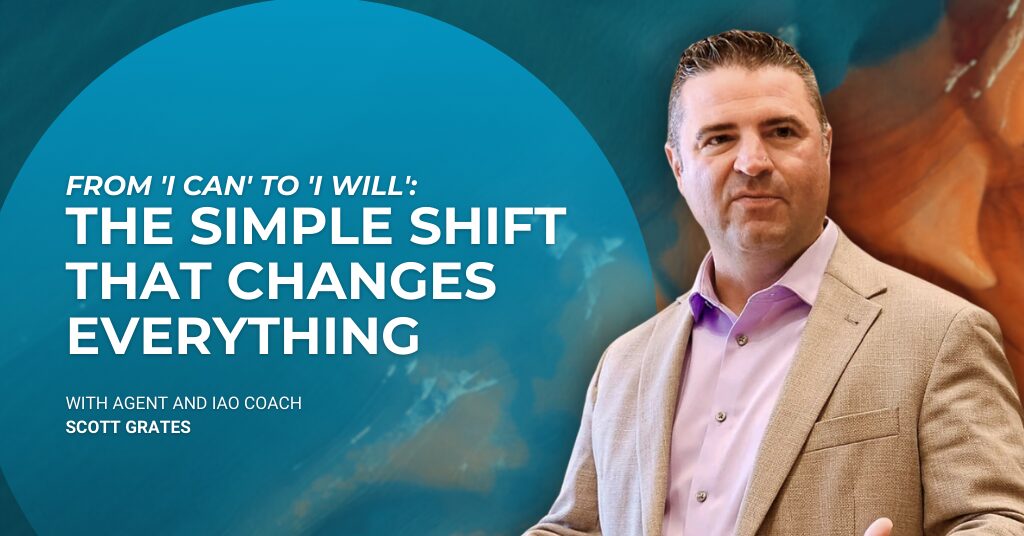
There are a few talking heads on TV that love to knock Whole Life insurance. “Buy Term and invest the rest,” they preach.
The bottom line is that they are all probably smarter than me. And the facts they throw out about life insurance are correct. I don’t disagree with buying Term and investing, but the reason they are off-base in their negative view about Life insurance is that the facts they present are from a textbook.
What all of you know, given the profession you’re in, is that life doesn’t happen in a textbook. Human beings are irrational and make decisions based on emotion, not logic.
In this post, I focus on a Life insurance benefit that many Agents don’t consider. In fact, many Agents apologize for this benefit and I think that’s a huge mistake.
The benefit is the forced savings element of Whole Life insurance.
What is forced savings?
It’s no secret that I am a big fan of permanent Life insurance. The easy argument is anyone who has someone they love or cares about needs life insurance in force when they die.
We all know the often-cited statistic that fewer than 1% of term policies ever pay a death claim. Most often the policy expires before the policyholder does.
Conversely, permanent life insurance policies that remain in force throughout a policyholder’s lifetime will pay a death benefit. Additionally, permanent life insurance also has a cash value component. A portion of every premium payment goes towards ensuring the policyholder’s life, while another portion of it goes towards building a cash value that also earns interest. This cash value can be available for the policyholder to withdraw or borrow against when they need it.
Here’s the point: When people buy permanent life insurance, they pay their premiums and it creates an environment of forced savings.
If there’s anything that the American people desperately need, it’s to save more money. And, they need the environment around them to create the discipline for saving that they don’t have on their own.
Consider the hypothetical example of a 35-year-old married couple and say we are running a spreadsheet ledger for them. In one column, we show their savings using a Roth IRA that’s invested in an S&P 500 index fund that they contribute $5,000 every year from age 35 to 65. On the other side of the ledger, they purchase a permanent life insurance policy that has a $5,000 annual premium payment over the same time period.
No matter how you look at it, or how good the particular company’s permanent life insurance policy is, the Roth IRA will blow the life insurance policy away every time. This is where the talking heads would make their case for the Roth IRA over permanent life insurance. On paper, they’d be right.
But the truth is that the majority of people don’t have the discipline to contribute to the Roth IRA every year for 30 years. In fact, the median balance of IRAs for individuals in their early 50s is $31,692. Considering that, historically, the annual contribution limit on Roth IRAs has been $5,500, this is a far cry from what the average balance could or should be.
The reason why is that, despite people’s best intentions, life gets in the way.
In the case of the 35-year-old married couple, the story goes that they begin contributing to their Roth IRA. Then they have kids, buy a new house, adjust their lifestyle to their income, and they start having other major financial commitments.
When people buy permanent life insurance they pay their premiums and it creates an environment of forced savings.
As a result, the first thing that gets put on hold is the Roth IRA account because retirement seems so far off in the future. There’s no immediate penalty for putting their contributions on hold. The devastating impact of skipping 4, 5, 10, or 20 years of Roth IRA contributions isn’t felt until much later in life.
On the other hand, the Life insurance policy has a loss if they stop contributing to it. They lose the death benefit. And for that simple reason, it is far more likely that at the very least a 35-year-old couple thinks very carefully before stopping their premium payments and losing the death benefit.
Most Life agents either don’t like the long-term commitment of permanent Life insurance premiums or apologize for it. When I hear that I can’t help but say,“𝘈𝘳𝘦 𝘺𝘰𝘶 𝘬𝘪𝘥𝘥𝘪𝘯𝘨 𝘮𝘦? 𝘛𝘩𝘢𝘵’𝘴 𝘵𝘩𝘦 𝘣𝘦𝘢𝘶𝘵𝘺 𝘰𝘧 𝘪𝘵!”
The commitment to making the payments is an unbelievable benefit of the product. When you make those premium payments, you are creating forced savings and putting yourself in a position down the road to have access to assets when you need them, thereby providing peace of mind and financial security.
That’s a game-changer.
So, stop apologizing for it and start promoting it.




